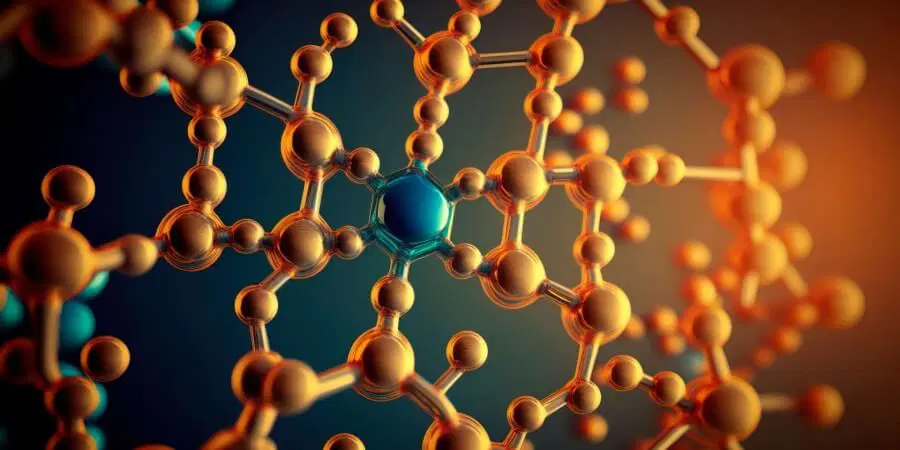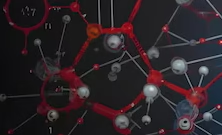 Ever wondered how these tiny chains of amino acids can have such profound effects in research? Let’s break down the science of peptides in a way that actually makes sense. No PhD required.
Ever wondered how these tiny chains of amino acids can have such profound effects in research? Let’s break down the science of peptides in a way that actually makes sense. No PhD required.
The Basics: What Are Peptides, Really?
Think of peptides as tiny messengers in your body. Just like you might send a text message to tell someone something important, your body uses peptides to send signals between cells. They’re basically small proteins, but don’t let their size fool you – these little molecules pack a serious punch in research settings.
The Building Blocks
Here’s something cool: peptides are made up of amino acids linked together, kind of like a chain of Christmas lights. While proteins might have hundreds of these “lights” strung together, peptides usually have fewer than 50. This smaller size actually gives them some advantages, which we’ll get to in a minute.
Why Size Matters in Peptide Research
Remember trying to squeeze through crowds as a kid versus an adult? Smaller size means better maneuverability. Peptides work the same way. Because they’re smaller than proteins, they can often:
- Get where they need to go faster
- Be absorbed more easily
- Target specific areas more precisely
- Break down and rebuild more quickly
The “Goldilocks Zone”
Scientists love peptides because they’re just right – not too big, not too small. They’re large enough to trigger specific biological effects but small enough to get where they need to go. It’s like having a key that’s perfectly sized for the lock you’re trying to open.
How Peptides Communicate With Your Body
This is where things get really interesting. Imagine your body as a huge city, with millions of cells acting like buildings. Peptides are like the mail carriers, delivering specific messages to specific addresses.
The Lock and Key System
When a peptide reaches its target cell, it works like a key fitting into a lock. Scientists call these locks “receptors,” but it’s the same idea. When the right peptide finds the right receptor, magic happens – the cell gets the message and knows exactly what to do.
Different Types of Peptides, Different Jobs
Just like you wouldn’t use a hammer to fix every home repair problem, different peptides have different jobs in research. Let’s break down some examples:
Growth Hormone Peptides
These are like the foremen on a construction site. They tell your body when to build more muscle, burn more fat, or repair damaged tissue. In research settings, peptides like CJC-1295 and Ipamorelin work this way.
Healing Peptides
Think of these as the emergency response team. BPC-157 and TB-500 are being studied for their roles in tissue repair. They’re like having a cleanup crew that shows up exactly where they’re needed.
Cosmetic Peptides
These are like the renovation team. GHK-Cu, for example, is studied for its role in skin repair and collagen production. It’s like having architects and builders specifically for your skin.
The Science of Absorption
Here’s something fascinating: not all peptides can be taken orally. Why? Because your stomach is basically a peptide destruction chamber. It’s designed to break down proteins and peptides into their building blocks.
Getting Around the Problem
Scientists have developed several ways to work around this:
- Subcutaneous injection (under the skin)
- Intranasal administration (through the nose)
- Transdermal application (through the skin)
- Special formulations to protect oral peptides
Timing Is Everything
Your body operates on rhythms, and peptide research takes this into account. For example, growth hormone peptides often show interesting results when studied during sleep cycles, while healing peptides might be researched throughout the day.
The Pulsing Effect
Here’s something cool: many peptides work better in pulses rather than constant exposure. It’s like interval training versus steady-state cardio – sometimes those breaks between activities make the whole process more effective.
Quality and Effectiveness
This is crucial: not all peptides are created equal. The difference between high-quality and low-quality research peptides can be like the difference between a Ferrari and a bicycle with a motor strapped to it.
What Makes Quality Matter
In research settings, peptide quality affects:
- How well they work
- How reliable the results are
- Safety profiles
- Consistency of outcomes
The Future of Peptide Research
We’re living in exciting times for peptide research. Scientists are discovering new peptides and new applications for existing ones almost daily. It’s like we’re in the Silicon Valley of biochemistry, with new breakthroughs happening all the time.
What’s Coming Next
Researchers are exploring:
- New delivery methods
- Novel combinations
- More targeted applications
- Better stability
- Enhanced effectiveness
Making Sense of It All
Understanding how peptides work doesn’t have to be complicated. Think of them as your body’s smart technology – sending specific signals to specific places to get specific results.
The Bottom Line
Whether you’re interested in research applications for:
- Recovery optimization
- Performance enhancement
- Anti-aging studies
- Overall health markers
Understanding how peptides work helps you make more informed decisions about research protocols.
What This Means For You
If you’re interested in peptide research, this understanding gives you a solid foundation. It’s like having a map before starting a journey – you might not know every detail of the road ahead, but you know enough to move forward confidently.
[Ready to explore research-grade peptides? Click here to learn more about our quality-assured compounds.]
Remember: This information is for research and educational purposes only. Always work with qualified professionals and follow proper research protocols.




